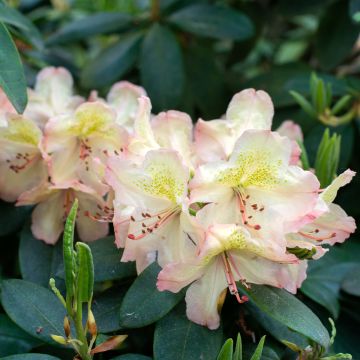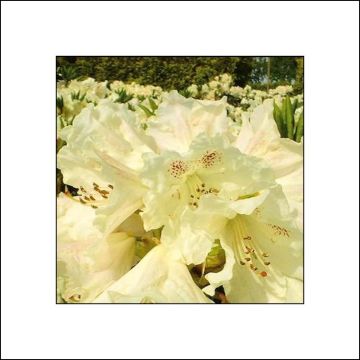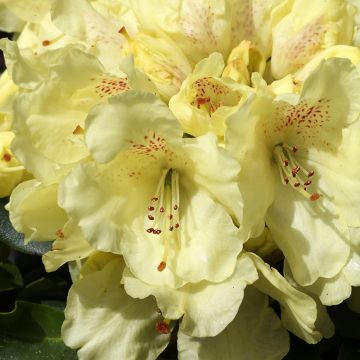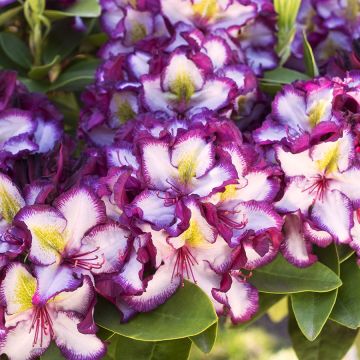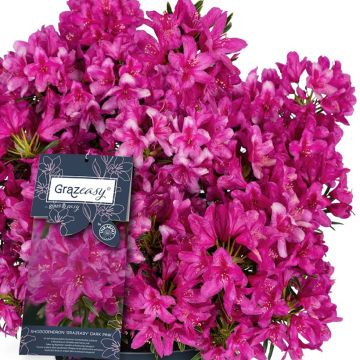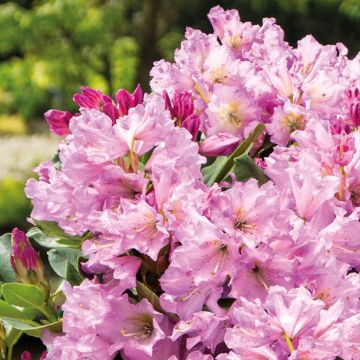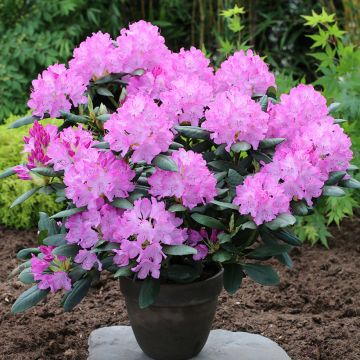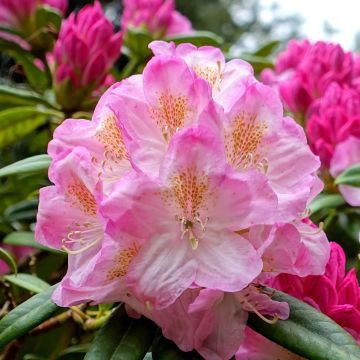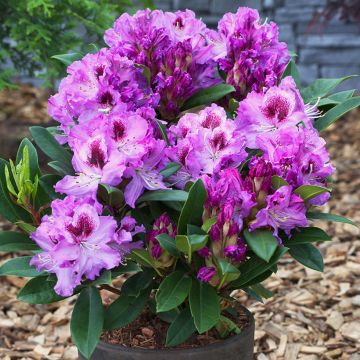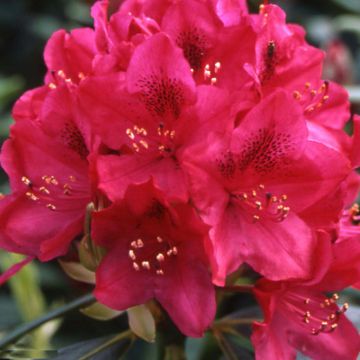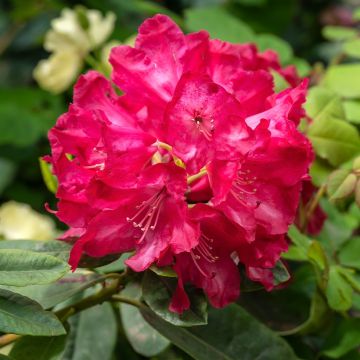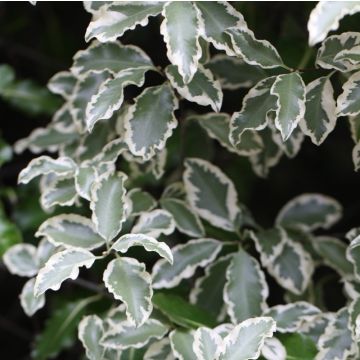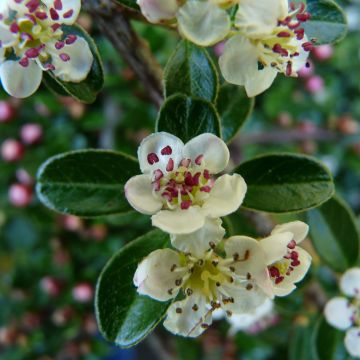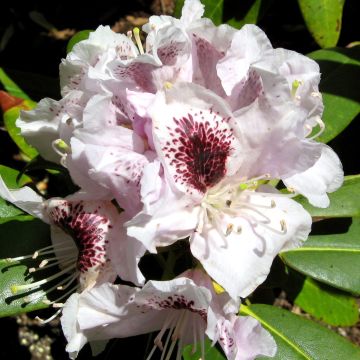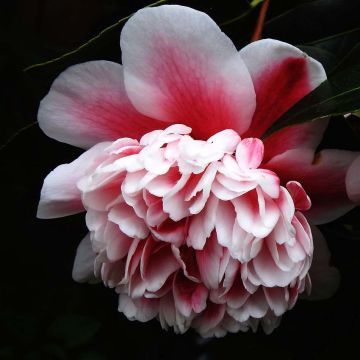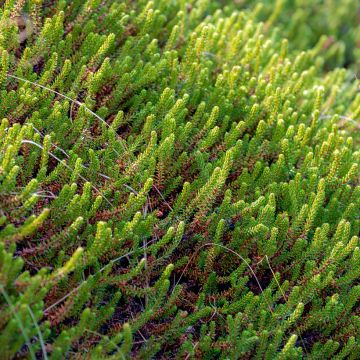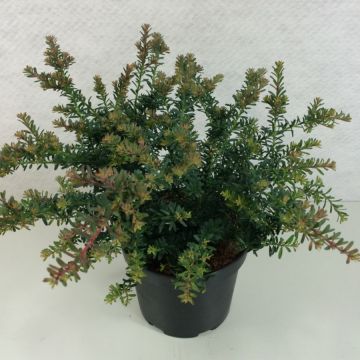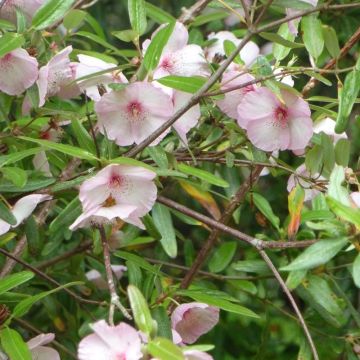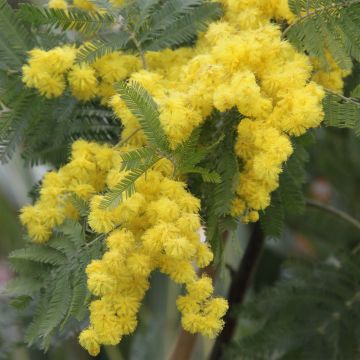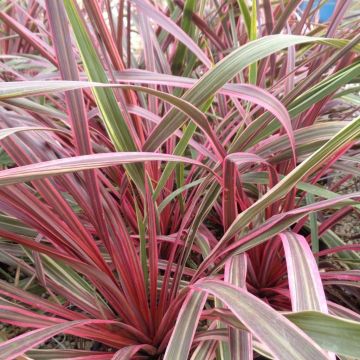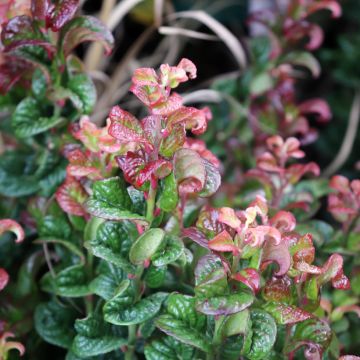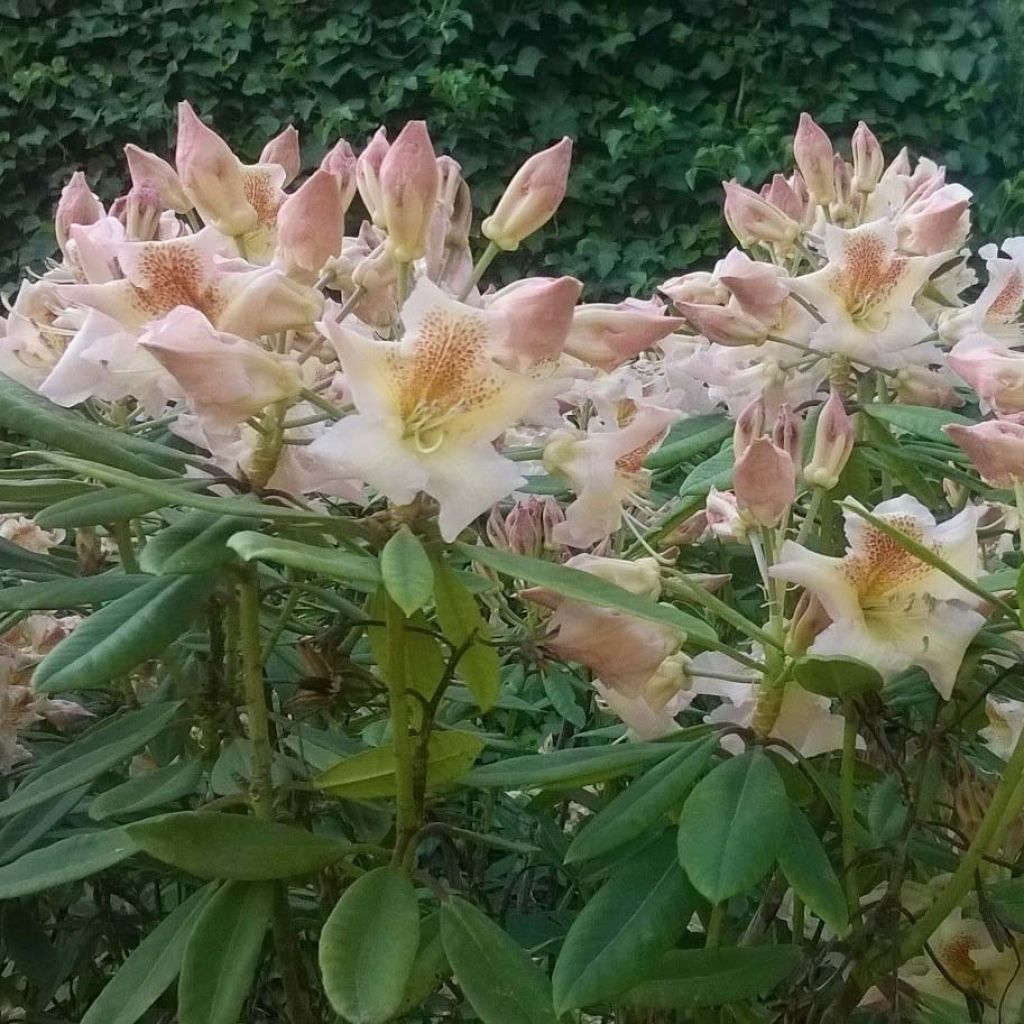

Rhododendron Inkarho Bernstein
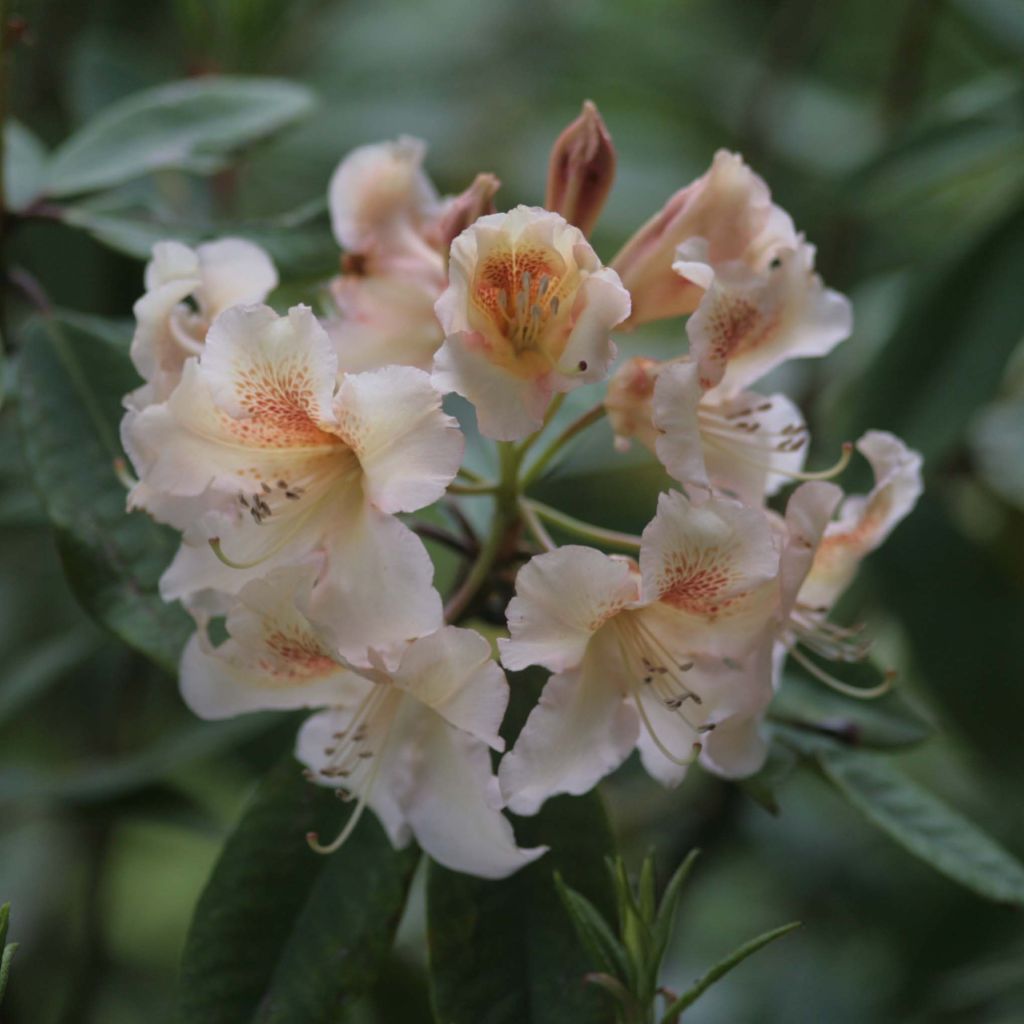

Rhododendron Inkarho Bernstein


Rhododendron Inkarho Bernstein
Rhododendron INKARHO Bernstein
Rhododendron INKARHO® Bernstein
Rhododendron
Why not try an alternative variety in stock?
View all →This plant carries a 24 months recovery warranty
More information
We guarantee the quality of our plants for a full growing cycle, and will replace at our expense any plant that fails to recover under normal climatic and planting conditions.
From €5.90 for pickup delivery and €6.90 for home delivery
Express home delivery from €8.90.
Does this plant fit my garden?
Set up your Plantfit profile →
Description
The Rhododendron Bernstein, just like the other varieties in the Inkarho range, stands out as an alien in the highly selective ericaceous world where these delightful bushes evolve. Its secret lies in its roots, which have a better tolerance of the presence of clay and limestone in the soil. On a large spreading bush, adorned with beautiful light green foliage, an abundance of large flowers bloom in June, with unusual colours for rhododendrons. They display a palette of cream, yellow, and orange tones, enhanced with brown spots on the throat. Hardy, elegant all year round, and of fine stature, it will work wonders in a large flowerbed or even in a hedge. It is high time for Rhododendrons to free themselves from ericaceous soil: this is now possible with this more versatile and equally charming variety!
Rhododendrons encompass more than 800 species from the Ericaceae family, cultivated for the beauty of their impressive flowering. The history of Inkarho Rhododendrons, slightly revolutionary plants recently presented at the Chelsea Flower Show, began in Germany more than 20 years ago. The discovery of a rhododendron naturally growing in a chalk quarry made it possible to graft different varieties onto its extraordinary root system. The bushes obtained by this method tolerate a wide range of soils with a pH ranging from 4.5 to 7.5, provided they are loose, fertile, moist, and not excessively alkaline. In summary, any soil that is suitable for hydrangeas.
Derived from a cross with a Yakushimanum hybrid Rhododendron, the 'Bernstein' Rhododendron was originally introduced on its own roots in 1965 in Germany. It forms a dense bush with a rounded, slightly spreading habit, wider than it is tall, averaging 1.75m (6ft) in height and 2.2m (7ft) in width at maturity. Its growth is rather slow, generally reaching 1m (3ft) in height and 1.4m (5ft) in width at the age of 10. Its evergreen leaves are light green, elliptical in shape and cover the plant excellently. They have a very fuzzy underside. In May, its remarkably abundant flowering submerges the bush: clustered in corymbs of 8 to 11 units, beautiful large flowers measuring 7 to 8cm (3in), salmon in bud, open into a palette of delicate shades, white-cream, pale amber yellow, orange, brown, dark red.
The Rhododendron Inkarho Bernstein is relatively tolerant regarding exposure; we recommend that you place it in non-burning sunlight or partial shade, if possible facing east where it will benefit from morning sun while being protected from excessive heat. In the garden, with its abundant and delicate flowering, it will easily adorn a shaded area of the garden, in the company of Ferns, blue or variegated hostas, Pieris, bushy heathers, Kalmias, Azaleas, and Japanese maples, or other rhododendrons from the same group to create superb patchworks of textures and colours. In a more traditional way, you can plant it alongside many other flowering shrubs, not necessarily ericaceous: hydrangeas, mock oranges, Japanese quince, buddleias, abelias, or autumn camellias. Japanese Anemones will also be good companions, as well as foxgloves in the undergrowth.
Report an error about the product description
Rhododendron INKARHO Bernstein in pictures
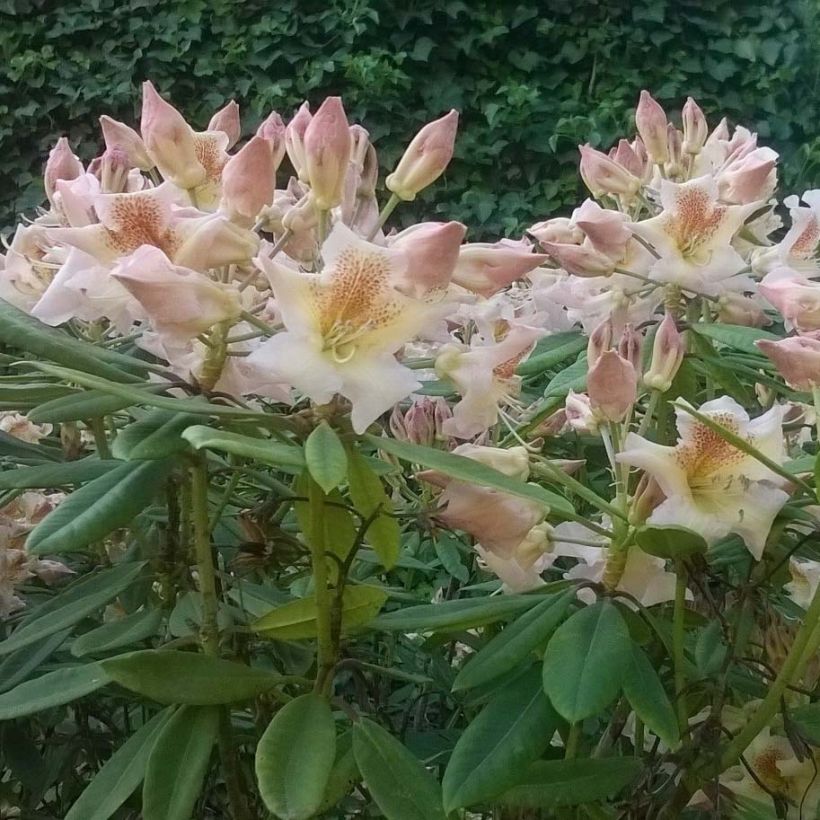

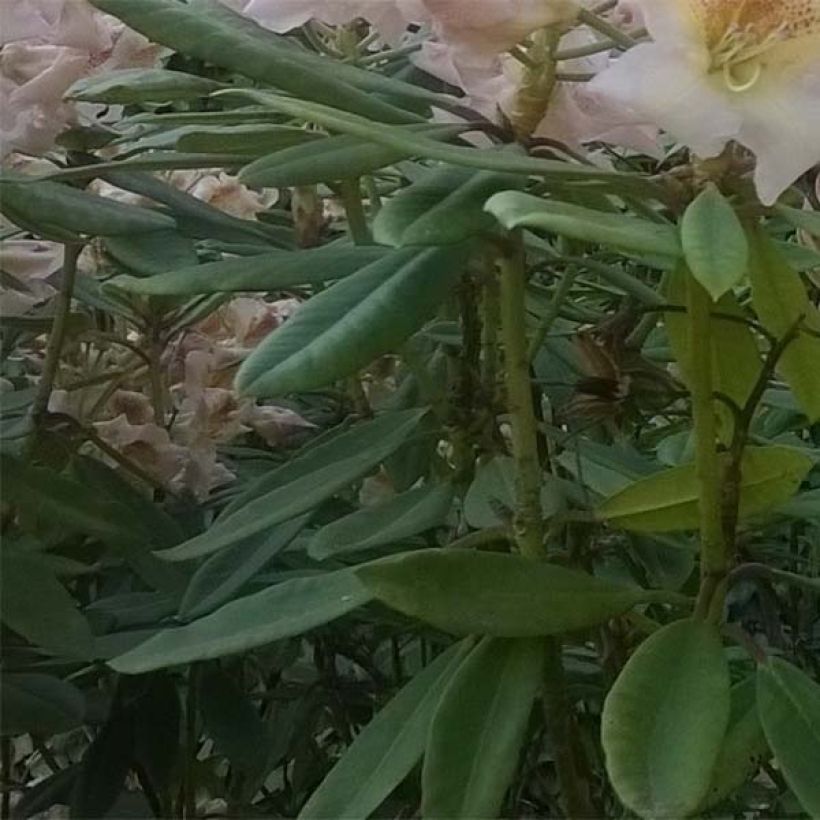

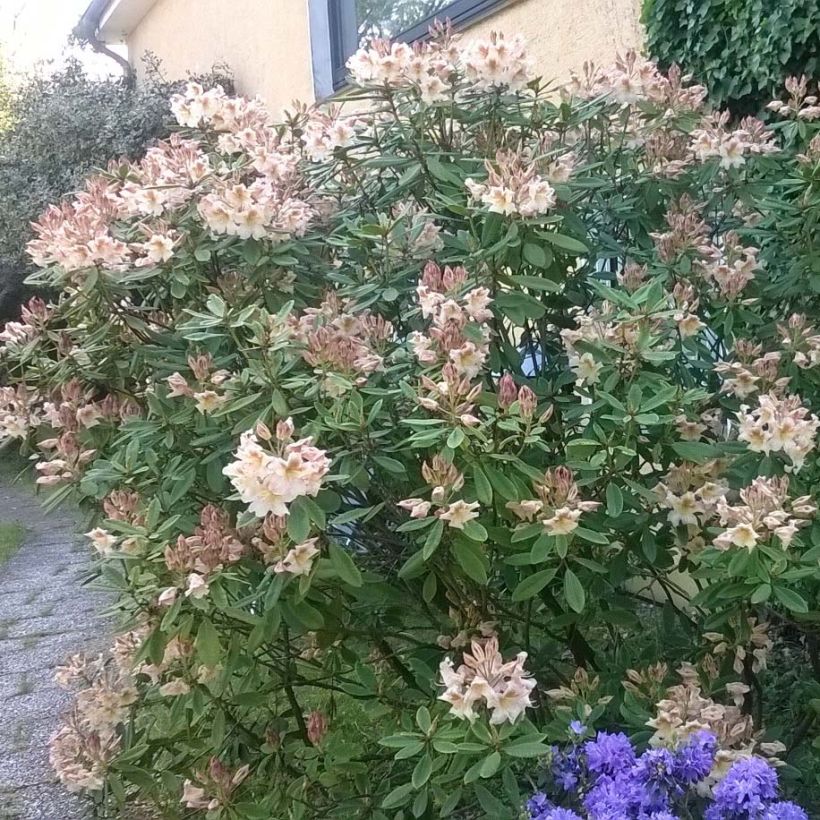

Plant habit
Flowering
Foliage
Botanical data
Rhododendron
INKARHO® Bernstein
Ericaceae
Rhododendron
Cultivar or hybrid
Other Inkarho Rhododendrons
Planting and care
Plant the Rhododendron Inkarho Bernstein in a partially shaded position, protected from cold and drying winds, in moist, loose, fertile soil. It will prefer a slightly chalky, neutral or acidic soil, which is suitable for hydrangeas. Dig a hole three times larger than the pot. Soak the root ball in water and plant the bush at the collar level, in a nutrient-rich mixture composed of leaf compost, gravel or pumice, and loam or topsoil, as Rhodos Inkarho are hungry plants. Water generously and keep the soil moist in summer. Azaleas and Rhododendrons have a relatively shallow root system. As a result, they are sensitive to long periods of drought. That is why humus-enriched soil and abundant watering during dry periods are recommended. Apply a layer of wood chips or mulch around the base of the bush every spring to maintain soil moisture and slightly acidic pH. Maintenance involves removing faded flowers after flowering and removing any dead branches.
Azaleas and Rhododendrons can sometimes be attacked by weevils that eat the edges of leaves and rootlets, as well as by the notorious "rhododendron borer" which does not usually cause significant damage. There are effective natural solutions against weevils. Yellowing of leaves (chlorosis) in Rhododendron indicates poor iron assimilation from the soil and can lead to premature plant death. While limestone is often the cause, poorly drained soil or deeply planted root balls can also explain the phenomenon.
Planting period
Intended location
Care
This item has not been reviewed yet - be the first to leave a review about it.
Evergreen shrubs
Haven't found what you were looking for?
Hardiness is the lowest winter temperature a plant can endure without suffering serious damage or even dying. However, hardiness is affected by location (a sheltered area, such as a patio), protection (winter cover) and soil type (hardiness is improved by well-drained soil).

Photo Sharing Terms & Conditions
In order to encourage gardeners to interact and share their experiences, Promesse de fleurs offers various media enabling content to be uploaded onto its Site - in particular via the ‘Photo sharing’ module.
The User agrees to refrain from:
- Posting any content that is illegal, prejudicial, insulting, racist, inciteful to hatred, revisionist, contrary to public decency, that infringes on privacy or on the privacy rights of third parties, in particular the publicity rights of persons and goods, intellectual property rights, or the right to privacy.
- Submitting content on behalf of a third party;
- Impersonate the identity of a third party and/or publish any personal information about a third party;
In general, the User undertakes to refrain from any unethical behaviour.
All Content (in particular text, comments, files, images, photos, videos, creative works, etc.), which may be subject to property or intellectual property rights, image or other private rights, shall remain the property of the User, subject to the limited rights granted by the terms of the licence granted by Promesse de fleurs as stated below. Users are at liberty to publish or not to publish such Content on the Site, notably via the ‘Photo Sharing’ facility, and accept that this Content shall be made public and freely accessible, notably on the Internet.
Users further acknowledge, undertake to have ,and guarantee that they hold all necessary rights and permissions to publish such material on the Site, in particular with regard to the legislation in force pertaining to any privacy, property, intellectual property, image, or contractual rights, or rights of any other nature. By publishing such Content on the Site, Users acknowledge accepting full liability as publishers of the Content within the meaning of the law, and grant Promesse de fleurs, free of charge, an inclusive, worldwide licence for the said Content for the entire duration of its publication, including all reproduction, representation, up/downloading, displaying, performing, transmission, and storage rights.
Users also grant permission for their name to be linked to the Content and accept that this link may not always be made available.
By engaging in posting material, Users consent to their Content becoming automatically accessible on the Internet, in particular on other sites and/or blogs and/or web pages of the Promesse de fleurs site, including in particular social pages and the Promesse de fleurs catalogue.
Users may secure the removal of entrusted content free of charge by issuing a simple request via our contact form.
The flowering period indicated on our website applies to countries and regions located in USDA zone 8 (France, the United Kingdom, Ireland, the Netherlands, etc.)
It will vary according to where you live:
- In zones 9 to 10 (Italy, Spain, Greece, etc.), flowering will occur about 2 to 4 weeks earlier.
- In zones 6 to 7 (Germany, Poland, Slovenia, and lower mountainous regions), flowering will be delayed by 2 to 3 weeks.
- In zone 5 (Central Europe, Scandinavia), blooming will be delayed by 3 to 5 weeks.
In temperate climates, pruning of spring-flowering shrubs (forsythia, spireas, etc.) should be done just after flowering.
Pruning of summer-flowering shrubs (Indian Lilac, Perovskia, etc.) can be done in winter or spring.
In cold regions as well as with frost-sensitive plants, avoid pruning too early when severe frosts may still occur.
The planting period indicated on our website applies to countries and regions located in USDA zone 8 (France, United Kingdom, Ireland, Netherlands).
It will vary according to where you live:
- In Mediterranean zones (Marseille, Madrid, Milan, etc.), autumn and winter are the best planting periods.
- In continental zones (Strasbourg, Munich, Vienna, etc.), delay planting by 2 to 3 weeks in spring and bring it forward by 2 to 4 weeks in autumn.
- In mountainous regions (the Alps, Pyrenees, Carpathians, etc.), it is best to plant in late spring (May-June) or late summer (August-September).
The harvesting period indicated on our website applies to countries and regions in USDA zone 8 (France, England, Ireland, the Netherlands).
In colder areas (Scandinavia, Poland, Austria...) fruit and vegetable harvests are likely to be delayed by 3-4 weeks.
In warmer areas (Italy, Spain, Greece, etc.), harvesting will probably take place earlier, depending on weather conditions.
The sowing periods indicated on our website apply to countries and regions within USDA Zone 8 (France, UK, Ireland, Netherlands).
In colder areas (Scandinavia, Poland, Austria...), delay any outdoor sowing by 3-4 weeks, or sow under glass.
In warmer climes (Italy, Spain, Greece, etc.), bring outdoor sowing forward by a few weeks.

































